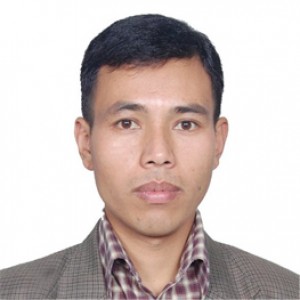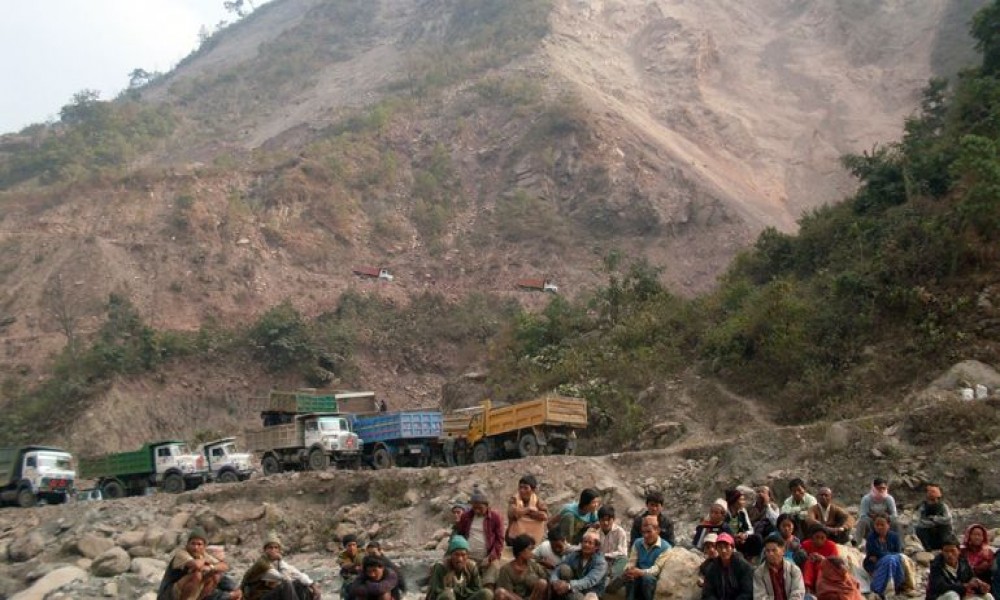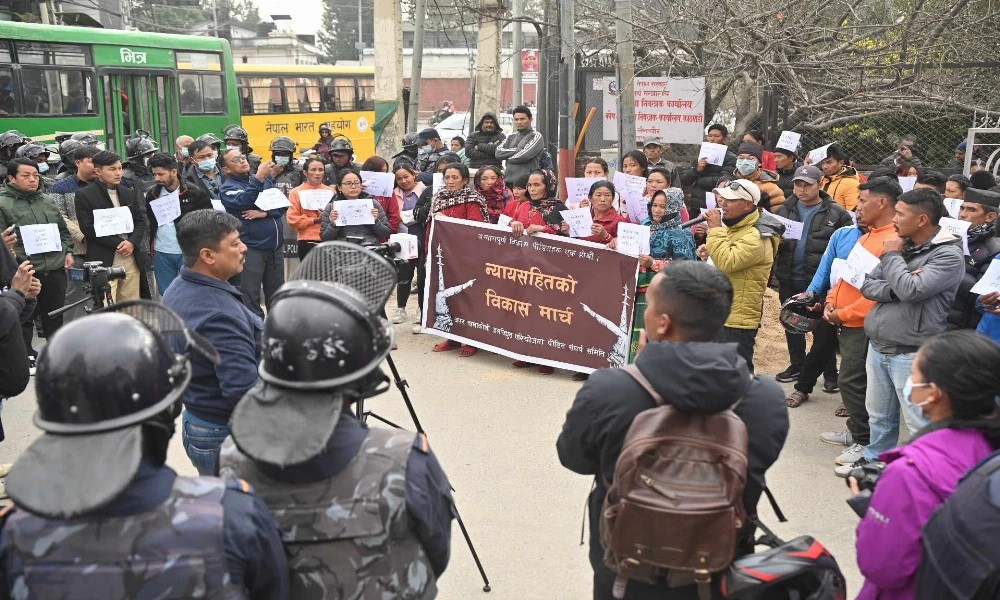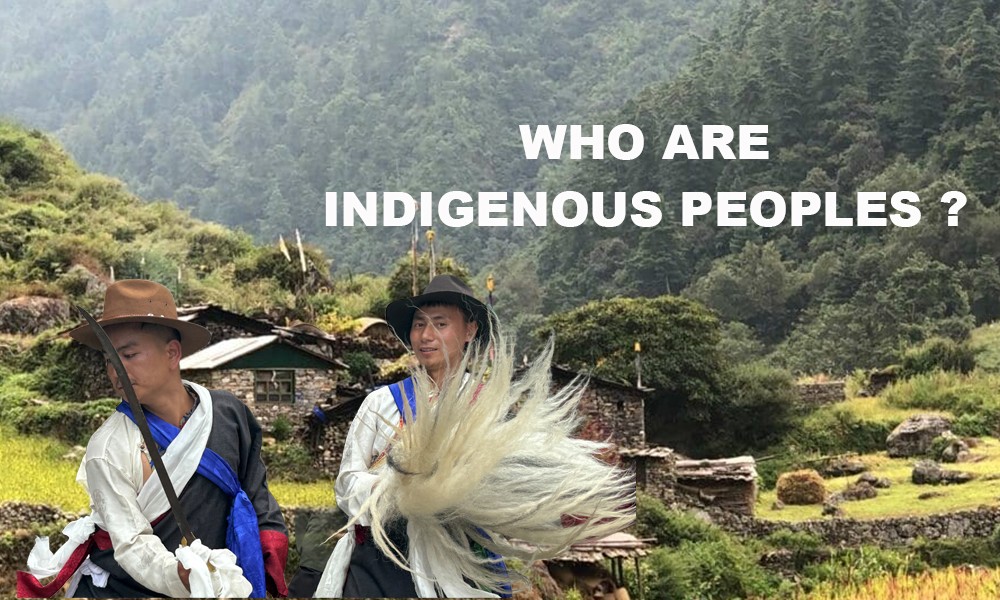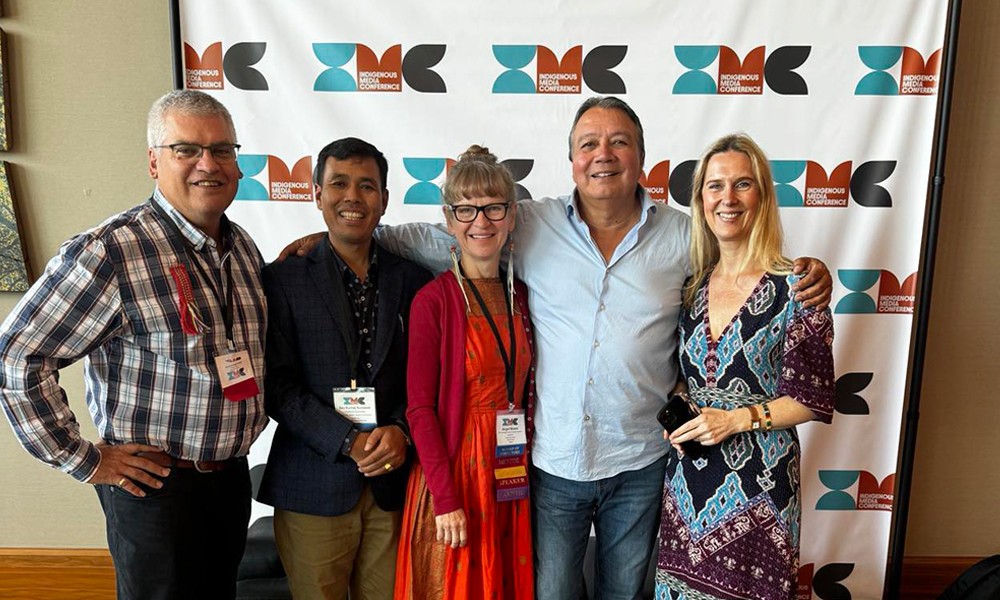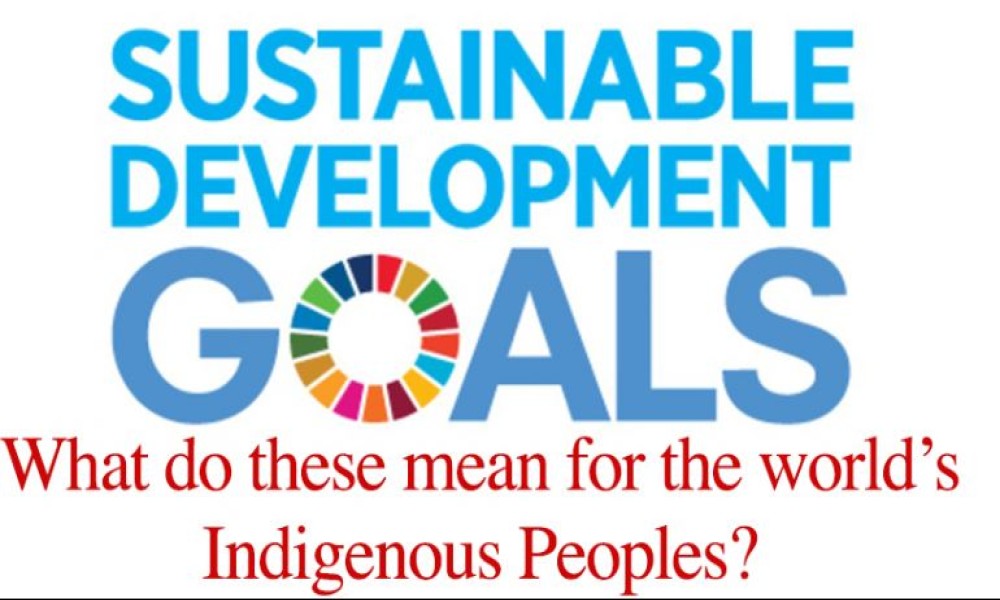In any seminar on hydropower, experts and policy makers say that 83,000 megawatt hydro electricity can be generated from Nepal's 6,000 rivers. In 2010, the Parliamentary Committee on Natural Resources and Means prepared a report according to which 42,000 megawatt hydro electricity can be generated in Nepal. But to date, merely 700 megawatt hydro electricity has been generated in the country.
To tap hydropower potential, every government has been introducing ambitious projects. In the last few years, Nepal's hydropower sector has been attracting a lot of investment. Officials say, currently, as many as 70 hydro electricity generating plants (capacity ranging from 6 to 750 megawatt) are in operation across the country. But these hydropower projects have always faced hurdles from local ethnic and indigenous communities.
Experts say obstruction created by ethnic and indigenous communities is natural as they are excluded from these projects. Most of these projects are either designed in Kathmandu or abroad. So, local communities do not feel ownership, have doubts, cause disruptions and conflict begins between them and hydropower companies. The roots of these conflicts are the Kathmandu-centrist rule that does not involve local communities in any decision making.
Commercially-run development projects on land, rivers and forests traditionally occupied by ethnic and indigenous communities have also led to violation of human rights of the marginalized people. The government, which always protects interests of international financial institutions, does not seem to have any qualms about deploying the army to silence the voice of the disgruntled indigenous communities displaced by mega development projects. Indigenous communities who decry the attack on their land, forests and rivers are often portrayed as the state's enemies and anti-development. To deploy the army against its own people, the government often declares mega projects as 'projects of national pride'. In fact, it is a calculated move to use the army against the people if they fight for justice.
The government has violated human rights of Indigenous Peoples by clinging on to a theory that the state can utilize natural resources whenever it requires them and using the army by declaring mega development projects as projects of 'national pride'.
Upper Tamakoshi Hydropower Project (456 megawatt) of Dolakha, Bhudhigandaki Hydropower Proejct (600 megawatt) on the border between Dhading and Gorkha and West Seti Hydropower Project (750 megawatt) are some of the projects of 'national pride'. The locals are up in arms against these projects not just because much of hydropower generated from here will be supplied to India but also because they were left out of the whole process. The locals also disrupted works in these projects for some time in the past.
Advocate Shankar Limbu, who is also secretary of Lawyers' Association of Human Rights of Indigenous Peoples (LAHURNIP), says the government has violated human rights of Indigenous Peoples by clinging on to a theory that the state can utilize natural resources whenever it requires them and using the army by declaring mega development projects as projects of 'national pride'.
According to Limbu, LAHURNIP has collected complaints of exclusion from as many as 35 districts. "From these districts, not only Indigenous Peoples but also local communities belonging to other caste groups like Chhetri and Bahun have complained that they were not consulted or involved in any phase of development projects being run in their villages. The state often accuses them of obstructing development process. But they are not anti-development people. They want development but their perspective of development is different. They want just and sustainable development."

Local Indigenous communities in sindhuli stating protest against Khimti-Dhalkebar high transmission line funded by World Bank: Photo: Milan Limbu
Why do Indigenous Peoples have concerns about development?
International laws, conventions and treaties ratified by Nepal have guaranteed Indigenous Peoples' rights over natural resources (water, land and forest) that they have been using for ages. The International Labor Organization (ILO) convention-169 and the UN Declaration on the Rights of Indigenous Peoples (UNDRIP)-2007 are some of these international laws.
As per these international laws, the government is legally bound to seek free prior and informed consent (FPIC) from ethnic and indigenous communities before formulating any law, policy and rules or designing programs and projects on their ancestral lands. The government is also bound to involve indigenous communities in such projects and entitle them to benefits. If lives and livelihood of local ethnic communities are affected by these programs, they should be compensated and their grievances must be addressed in a just way.
As per these international laws, the government is legally bound to seek free prior and informed consent (FPIC) from ethnic and indigenous communities before formulating any law, policy and rules or designing programs and projects on their ancestral lands. The government is also bound to involve indigenous communities in such projects and entitle them to benefits. If lives and livelihood of local ethnic communities are affected by these programs, they should be compensated and their grievances must be addressed in a just way. But the government has never sought free, prior and informed consent from local ethnic communities. Nor has it ensured their meaningful participation in development projects and distribution of benefits.
Advocate Bhim Rai says, "But the government has never sought free, prior and informed consent from local ethnic communities. Nor has it ensured their meaningful participation in development projects and distribution of benefits."
Rai adds, "Indigenous Peoples are often described as an anti-development community. The reality is: Indigenous Peoples want sustainable development, not the kind of development that is now taking place. Indigenous Peoples are not aware about their rights. Without addressing their justified demands, no development project can be completed. Development projects that are run with their participation will be long-lasting. If they are ignored, they are not going to stay just as mute spectators."
Of late, the ILO convention-160 and the UN declaration on the rights of Indigenous Peoples have guaranteed not only Indigenous Peoples' rights but also rights of all local communities over natural resources. So, non-Indigenous Peoples are also pressing for implementation of these conventions now.
These conventions and declarations state that indigenous communities must be informed and consulted with good intentions through their representative organizations when development projects are run to tap mineral, water and other natural resources in their villages.

Local Indigenous communities in sindhuli stating protest against Khimti-Dhalkebar high transmission line funded by World Bank demanding FPIC
Why protests?
The government and international companies have not followed international treaties and conventions in any mega development projects.
The local people of Sindhuli district have disrupted works of Khimti-Dhalkebar Transmission Line Project, which is being constructed to supply hydropower to India. The World Bank-funded project is now two years behind its schedule due to obstruction created by the locals of Sindhuli. When the government used force to oppress the agitated locals, they formed a committee to carry forward their protest programs.
The locals are up in arms against this project because transmission line will be set up over their houses. It is against Electricity Regulation-1993. The project office seems to have tried to hidden this fact but the locals knew about it and launched protests. They say their life will be at risk when a transmission line hangs just above their houses.
Ukta Bahadur Thapa, coordinator of a struggle committee formed by the locals, says, "We were never consulted when this project was designed. When when technical teams visited our villages, they lied to us saying they were doing a survey to set up telephone poles. We knew much later that their survey was to set up electricity poles."
The locals demanded a report of Environment Impact Assessment from the World Bank (WB). When they went to submit their application, the WB officers asked them to submit an application in English. They were later told that all the information about the EIA is available on the WB's website. But that was all in English. The poor and uneducated locals did not know what was written there.
Advocate Limbu of LAHURNIP says, "The locals demanded a report of Environment Impact Assessment from the World Bank (WB). When they went to submit their application, the WB officers asked them to submit an application in English. They were later told that all the information about the EIA is available on the WB's website. But that was all in English. The poor and uneducated locals did not know what was written there."
The locals of Sindhuli have now filed a case against Khimti-Dhalkebar Transmission Line Project at the Supreme Court (SC), an independent panel that hears complaints against the WB-funded projects and the UN panel that hears complaints of human rights violation. And the project is in limbo.
Like Khimti-Dhalkebar project, many other hydropower projects are facing hurdles from Indigenous Peoples. Upper Marsyangdi Hydropower Project (50 megawatt), being developed by a joint venture of Sino-Sagarmath Hydro Company, is in a similar situation. The locals of Khudi, Simpani, Bulbule, Kngadi and Besisahar of Lamjung district created obstructions saying they were not informed about impacts of the project and public hearing was not organized. But, Sino-Sagarmatha Hydro Company's Deputy Director Karna Adhikari refutes the locals' allegations. "Public hearing was conducted and we also agree to provide compensation to the locals to be affected from the project," he says.
The local Koĩts Sunuwar people obstructed Likhu hydropower project (120 mega watt) on the border between Okhaldhunga and Ramechhap district. They said the project posed threats of displacement and damage on local biodiversities.
"We are not opposed to development works and we have no prejudices whatsoever," says Uttam Kaatich Sunuwar, a local resident. "But we feel hut when a development project is launched in our own village and no one informs us what they are doing."
The local people of Amarpur and Panchami villages in Panchthar district and Thechambu and Nangkholing villages of Taplejung district caused disruptions in Kabeli hydropower project (32.6 megawatt) being developed by Butwal Power Company (BPC). The reason for their protest was the same: their exclusion.
These are just a few examples of exclusion of Indigenous Peoples in the name of development. In constructions of dams and hydropower, indigenous communities have always been discriminated and displaced.
Advocate Rai says, "It is obvious that companies invest their money to make profits but it now seems that they launch development projects to rob Indigenous Peoples of their lands."
We are not opposed to development works and we have no prejudices whatsoever. But we feel hut when a development project is launched in our own village and no one informs us what they are doing.
He adds, "In the name of development works, these companies have damaged houses, fertile crop fields and holy places of Indigenous Peoples. When the locals protest, these companies use the state's force to silence them. Only if all the locals get united and gather more strength, the companies agree to hear their voices."
Consent of indigenous communities is required even when the army or any security forces are deployed in their villages. But the government has never thought it necessary to seek their consent. And, although the ostensible objective of deploying the army is to save properties and people related to development projects, it is also to terrorize the local people.
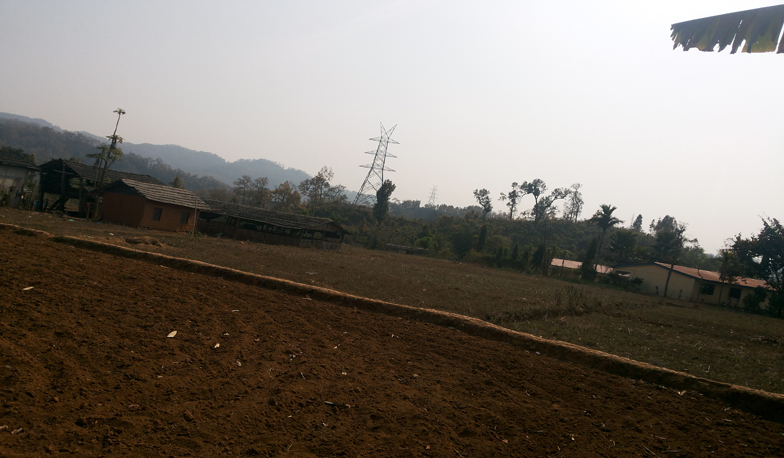
Khimti-Dhalkebar high transmission line funded by World Bank is above the human settlement in sindhuli district
What are the alternatives?
Relation between Indigenous Peoples and natural resources (land, water and forest) is like that between water and fish. Not only do Indigenous Peoples have a historic and emotional attachment with their land but it is also their livelihood. In short, land is everything for them. If they are driven off their land, they will die.
This is why there are international conventions relating to Indigenous Peoples that required the government and national/international companies to seek their informed consent before launching any development projects. Nepal's interim constitution-2007 also states the same.
The bottom-up approach of development has to be really adopted. Before beginning any development project, its every aspect – from economic cost, environment degradation to impact on livelihood of the locals – must be explained to indigenous communities in whichever language they are comfortable with. If development projects affect livelihood of Indigenous Peoples, they must be compensated.
The new bottom-up approach of development is now being discussed. As per this approach, development process has to begin from a ward committee and then it has to go through VDC, area and district. The centre should be the last to decide. But this approach is limited only in policy papers, according to Dr Chaitanya Subba of National Planning Commission (NPC).
Subba says, "This approach has to be really adopted. Before beginning any development project, its every aspect – from economic cost, environment degradation to impact on livelihood of the locals – must be explained to indigenous communities in whichever language they are comfortable with. If development projects affect livelihood of Indigenous Peoples, they must be compensated. It is not illegal on the part of indigenous communities to protest any development project that affects their lives and livelihood."


